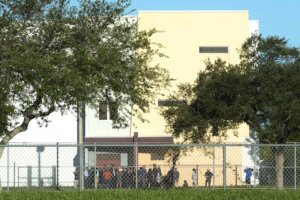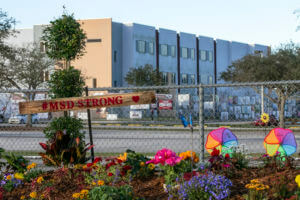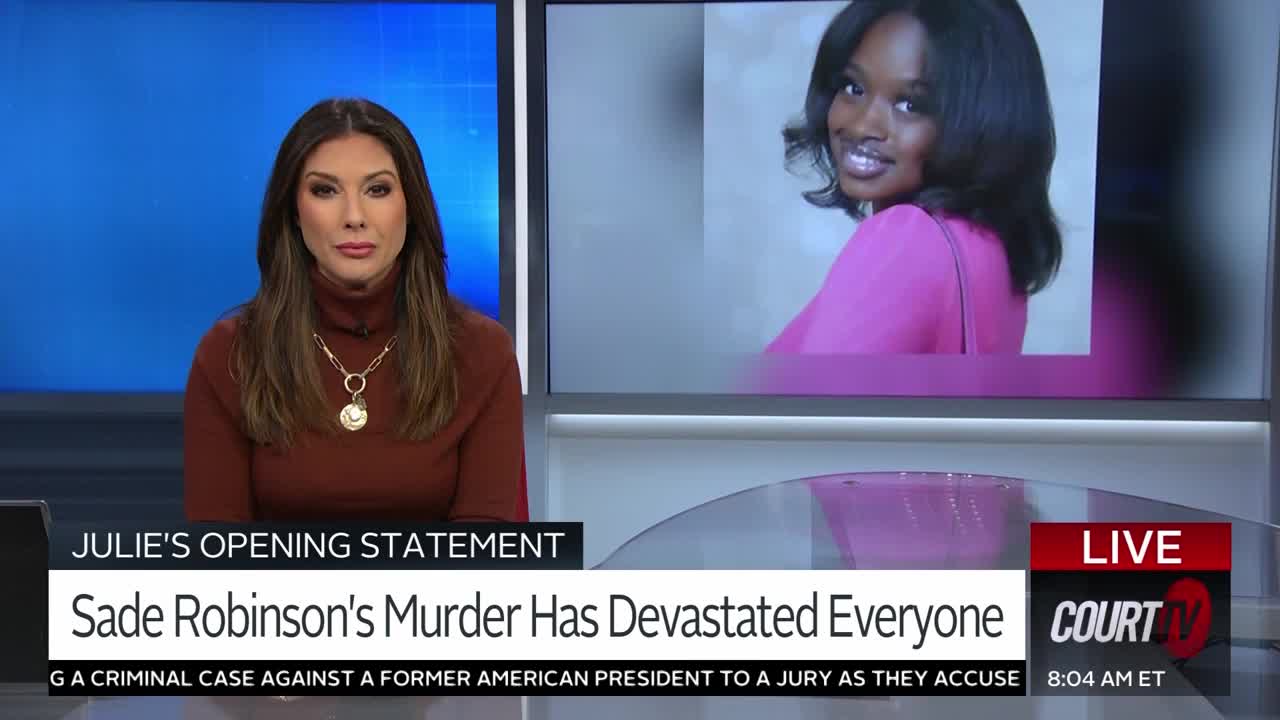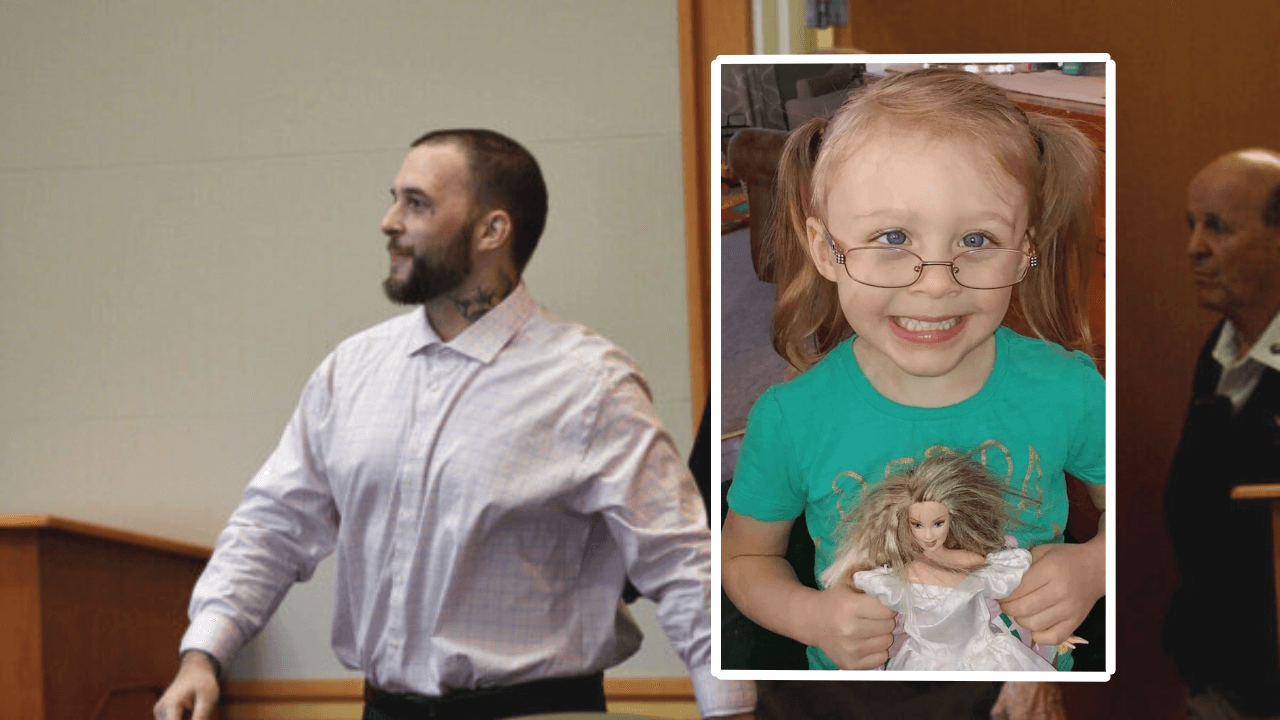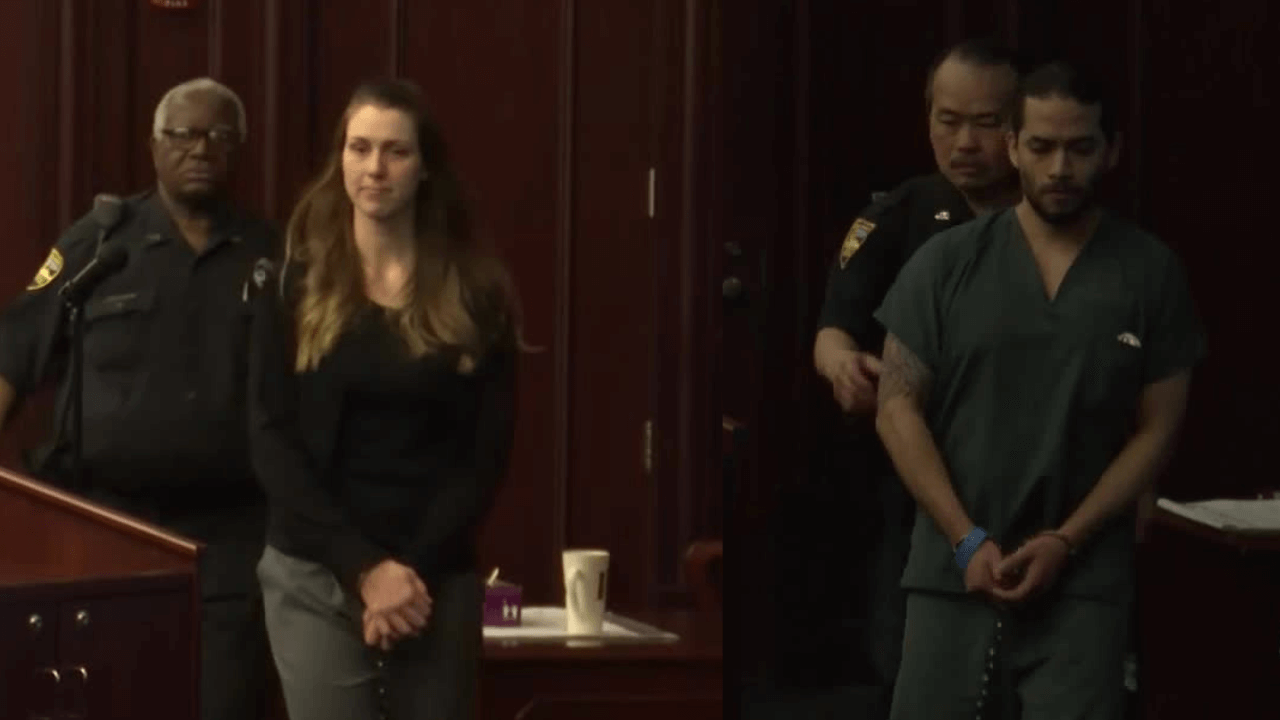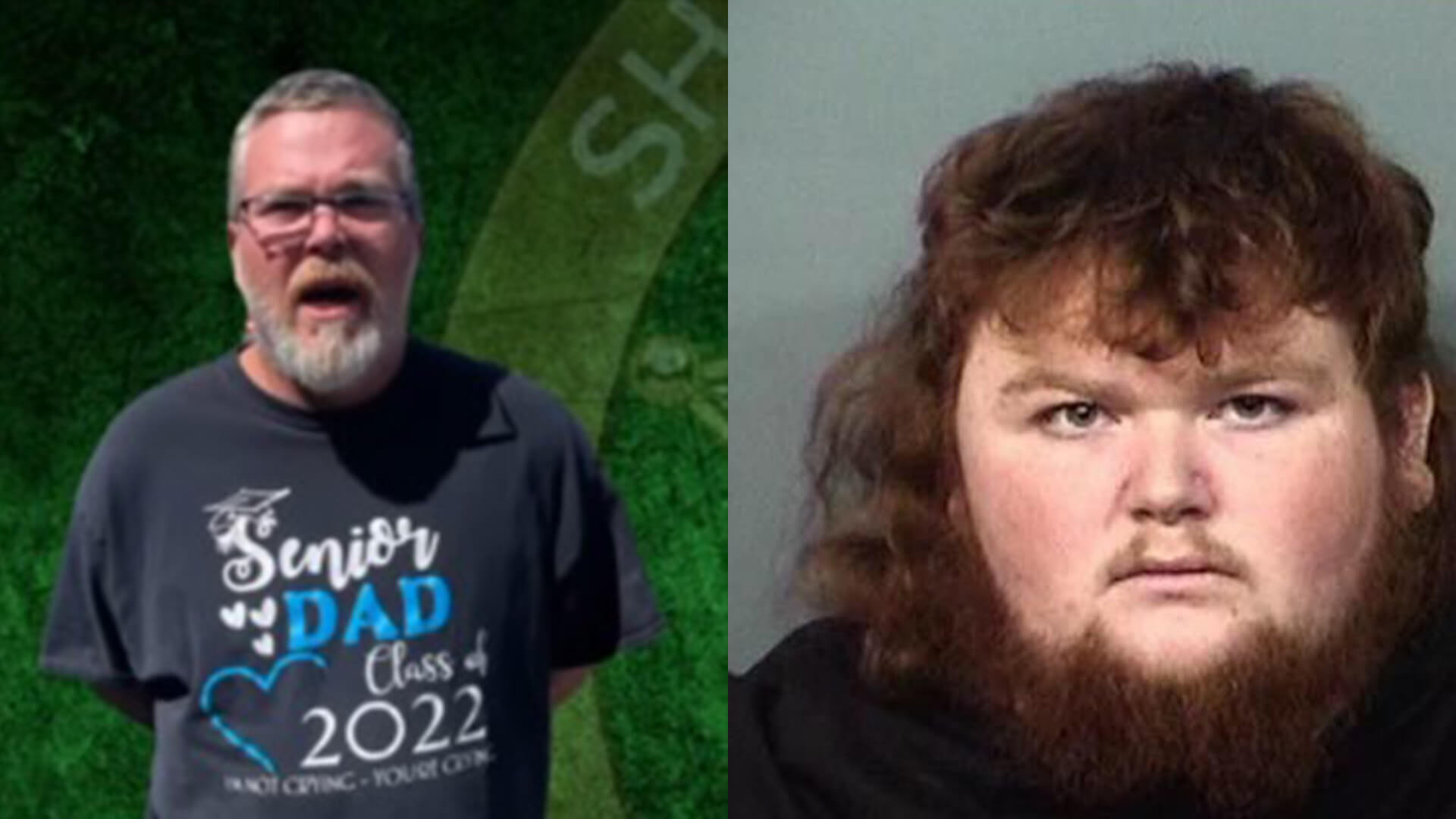FORT LAUDERDALE, Fla. (Court TV) — The freshman building of Marjory Stoneman Douglas High School in Parkland, Florida, has been frozen in time since February 14, 2018, the day a former student stormed the hallways with a semiautomatic rifle, killing 17 people and wounding 17 more.
It was preserved as a crime scene so a jury could one day retrace Nikolas Cruz’s steps in an effort to understand what happened. Today, that day finally arrived.
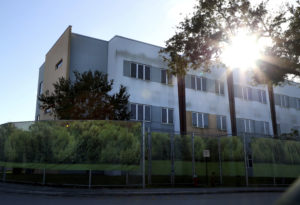
The 1200 building at Marjory Stoneman Douglas High School in Parkland, Fla., is pictured, on Wednesday, October 20, 2021. (Carline Jean/South Florida Sun-Sentinel via AP)
Two vans carrying the 22 members of the jury pulled up to the school just before 10 a.m. Thursday for the jury view of the crime scene. It was one of the last parts of the state’s case-in-chief in Cruz’s penalty phase, where the jury decides if he deserves life or death for his crimes.
The 1200 building now sits behind a 15-foot chain link fence wrapped in a mesh banner with the MSD logo against a blue-sky landscape. It’s been an inescapable reminder of the carnage for current students and staff, who have been waiting for jury view day so the building can finally be demolished.
The viewing went forward despite numerous attempts by Cruz’s defense to stop it. When prosecutors first requested a jury view in 2020, the defense argued the state’s evidence was “more than adequate” without it and that it would prejudice Cruz. The defense renewed those objections on Wednesday, arguing the visit was unnecessary because of all the photos and videos the jury has seen during the penalty phase of the massacre and its aftermath. They also asked the judge to not let the jury walk through the classrooms because Cruz himself didn’t enter them, he shot into the rooms from outside the door.
Judge Elizabeth Scherer denied those requests, leaving the jury free to wander the hallways and classrooms where Cruz left a bloody trail littered with bullet casings, shattered glass and Valentine’s Day mementos.
READ MORE: FL v. Cruz: Parkland Shooter Penalty Phase
Journalists were allowed into the building after the jury left for a rare glimpse into hallowed ground. We entered through the east stairwell just as Cruz did. A dirtied white teddy bear and two small gift bags lay in the stairwell where Cruz assembled his gun.
Throughout the building, shards of broken glass crunched as we walked over them and wedged into the soles of our shoes. The piles blanketed the threshold of each classroom where Cruz’s gunshots pierced windows in the door. Those doors were left open for the jury and journalists to roam through.
In room 1218, teacher Brittany Sinitch’s English class, textbooks were open on desks to a passage from Romeo and Juliet. A teddy bear sat on a desk. A clear plastic drink cup sat half-full on a desk, its contents now a dark brown sludge. A Valentine’s Day card on a desk read, “I don’t just like you, I really, really like you.”
In room 1213, a large pool of dried blood marked the spot where 17-year-old Carmen Schentrup died from a bullet wound to the head. She and her classmates hid behind the teacher’s desk. The wall behind the desk is decorated with photos of what appears to be the teacher’s family and a drawing of former President Trump with the saying “We will win in everything we do.” On another wall, a bulletin board with about two dozen wallet-sized photos of students. A lone white sneaker remains on the floor.

The 1200 building at Marjory Stoneman Douglas High School in Parkland, Fla., is pictured, on Wednesday, October 20, 2021. (Carline Jean/South Florida Sun-Sentinel via AP)
Room 1214, where Ivy Schamis taught Holocaust Studies, revealed an especially chaotic scene. Desks were askew, jammed atop each other. Open laptops sat atop desks nicked with bullet marks. The learning objective was still written on the board: “To be aware of the world and its surroundings.” In the corner of the room is the bookshelf marking the area where Nicholas Dworet and Helena Ramsay died. Their blood covers the wall and appears on piles of Holocaust books scattered on the floor.
No classroom saw as much loss as Dara Hass’ English class, room 1216. Bullet holes in the walls. A startlingly large pool of dark, caked blood on the floor marks the desk where Alex Schachter was shot twice in the chest. A blue folder with victim Alaina Petty’s name sits on a desk. Unfinished essays everywhere. “We go to school every day of the week and we take it all for granted,” one student wrote. “We cry and complain without knowing how lucky we are to be able to learn.”
Next to the blood-stained floor where Petty and Alyssa Alhadeff died is a handwritten paper about Malala Yousafzai, the Taliban survivor, titled, “The girl who wanted to go to school.” The essay reads, “a bullet went straight to her head but not her brain,” and ends with, “in conclusion, we the people should have freedom for education.”
On cabinet doors, a previous assignment is on display. It shows headstones with epitaphs written by the students.
“R.I.P. Here lies pretty.”
“R.I.P. Here lies funny.”
“R.I.P. Here lies nice.”
More glass on the second floor, where Cruz fired into several classrooms, but no one was injured. The shots signaled to people on the third floor that this was no drill, but a real-life active shooting.
Entering the third floor hallway from the east side stairs, the first thing you see is a pool of dried blood that’s much smaller than others. This is where Scott Beigel’s body fell in front of classroom 1256. Unlike other rooms, the window on his door is intact. Beigel died holding the door open. His body blocked the door from closing. The children hiding in the front of his room were vulnerable, but Cruz chose not to enter.
Plastic world maps about the size of a placemat sit on most desks. Three wall clocks lay face down by the door. On Beigel’s desk were worksheets comparing Christianity and Islam. On the whiteboard, notes on the 2018 Winter Olympics medal-winners. A deflated Valentine’s Day balloon lay on the ground.
READ MORE: What it was like to visit the scene of the Parkland school shooting
In room 1255, teacher Stacey Lippel’s classroom, the door is pushed open – like others to signify that Cruz shot into it – and a “No Bully Zone” hangs on the inside. The creative writing assignment for the day is written on the whiteboard: “How to write the perfect love letter.”
The teacher’s desk is to the left and one can imagine students huddled behind it. The desks are in disarray, some pushed on top of each other from what was described in testimony as a mad rush to get back inside. Atop one desk is an enviable Valentine’s Day spread – a large gift bag with tissues stuffed inside it, a box of round, silver-wrapped candies, and a heart-shaped box.
Moving down the hallway, aged, cracked rose petals mixed with the glass shards lend a cinematic feel to the scene. There’s a large pool of blood in the middle of the third floor hallway near the water fountains where Anthony Borges was injured. A sign above the water fountains has a quote from Star Wars’ Yoda: “Do or do not. There is no try.”

FILE – Suzanne Devine Clark, an art teacher at Deerfield Beach Elementary School, places painted stones at a memorial outside Marjory Stoneman Douglas High School during the one-year anniversary of the school shooting, Thursday, Feb. 14, 2019, in Parkland, Fla. (AP Photo/Wilfredo Lee, File)
Beneath the water fountains, three large pools of dried blood mark the spots where authorities dragged the bodies of Cara Loughran, Meadow Pollack, and Joaquin Oliver. A faint red trail traces the paths of the girls’ bodies from the alcove where their bodies fell after being shot. A large blood smear appears in the alcove outside 1249 where Pollack and Loughran died. They remained there, injured, after the rest of the group that huddled in the alcove with teacher Ernie Rospierski fled down the hallway. Then Cruz returned and shot them again – ending any chance they had of surviving their wounds.
In room 1249, Rospierski’s classroom, an unfinished chess game sits on a desk, presumably, the one Peter Wang’s friend said he was playing when the fire alarm went off.
Another chilling site is the alcove outside the bathroom where 17-year-old Joaquin Oliver died. Drops of blood trace the path into the alcove from the hallway, where Oliver was first shot and wounded. In the alcove, the wall is littered with blood splotches and bullet holes that were fired at him at close range. A medical examiner testified that Oliver was conscious after he was hit, and held up a hand, presumably, to defend himself. Two bullets in the wall show how vain that attempt was. There’s a lock of dark hair on the floor near where his body would have been. The corner of a heart-shaped paper Valentine’s Day decoration (perhaps was a card) is drenched with his blood.
Moving down the hall toward the west wall, bullets scraped against the south walls, suggesting that Cruz targeted the fleeing students.
We see the corner in front of the west stairwell where Peter Wang fell after being shot as he raced down the hallway. Squares resembling search quadrants are drawn into the wall, which is stained with dark splotches of blood and yellow-greenish material that was described in testimony as brain matter. Pin-sized holes in the wall have circles drawn around them and are marked “fragment D” and “fragment F.” Six bullet holes pierced the window above where Wang died.
Jaime Guttenberg was struck outside the stairwell but fell inside. There is very little blood where she fell. The bullet never left her body.
In the teacher’s lounge, a window pane facing the 1300 building has 4 bullet holes. Another window pane next to it has another bullet hole. These overlook the courtyard and a parking lot where students were fleeing.
A poster next to the windows reads, “Typical or Troubled?” It has phone numbers for counseling services. “Notice if you are seeing troubling signs in a student,” the sign urges. “Share observations with school mental health staff.”
The windows look out on the football field that Cruz ran past a few minutes later.







